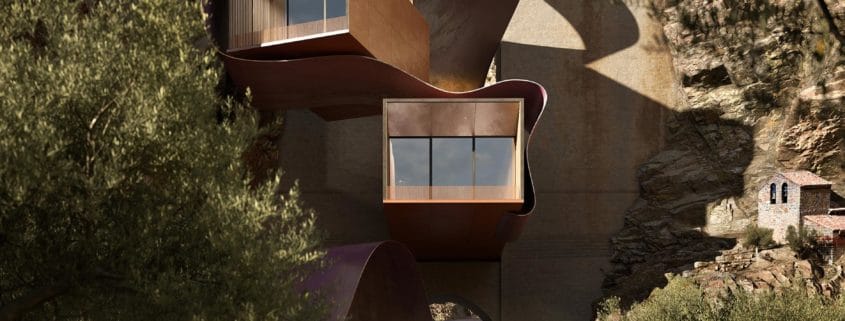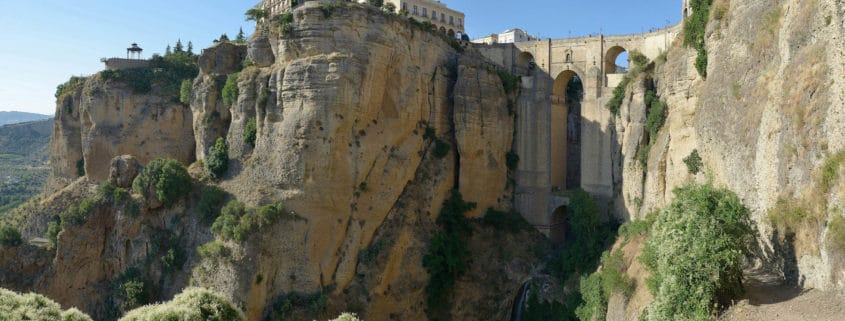Puente Nuevo, Ronda’s bridge is located in Andalusia in the south of Spain designed by the architect Martín de Aldehuela. It was completed in 1793, after 40 years of construction and after a first catastrophic attempt where 50 builders lost their life.
Built in three stages, the first stage forms the foundation against the bedrock and the first arch, which in turn forms the foundation for the main arch that takes the bridge to a height of 90m. The final stage includes the two top arches and the centre room of about 60 square, which was a prison for bandits and dangerous criminals during the 19th century, and then for political prisoners during the Spanish civil war.
Despite its dimensions, the bridge looks like a natural element of the rock. The material used in the construction, extracted from the bottom of the river gorge, blends with that of the cliff walls achieving a stunning camouflage effect with nature.
Spain is the world’s leading source of the golden juice of the olive fruit, the essence of Mediterranean cuisine. It produces about half the world’s total olive oil, of which about 46% is exported, making Spain the world’s leading olive oil producer and exporter.
More than 350 million olives are grown all over Spain, and in some regions the olive landscape is staggering. This is the case in some parts of Andalusia where extensive olive orchards grow alongside holm and cork oaks on broad plains or alongside green pine forests on mountain slopes, creating a landscape of outstanding beauty and personality.
My starting point for the “Converted” competition is to integrate one of the oldest tradition of agriculture in Spain into a third conception of the Ronda bridge. The project is based on integrating the modern architecture of the farm into one of the most ancient bridges in that area.
Mixing the old raw materials with modern elements such as glass, steel and concrete, the idea is to keep the old functionality of the bridge, connect the old town to the new one, but at the same time keep alive a tradition but in a modern environment. It is a matter of respect for the connection between OLD and NEW.













